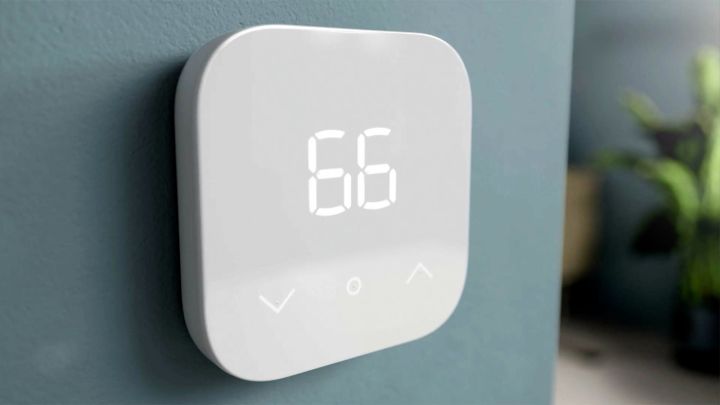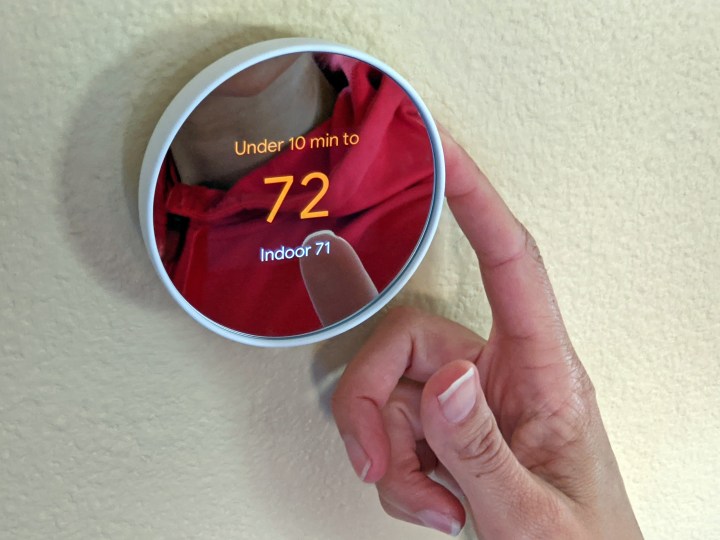If you’re looking for a reliable smart thermostat that costs less than $150, the Nest Thermostat and Amazon Smart Thermostat are two of your best options. Beyond coming from reliable companies, these two smart thermostats offer sleek designs, tons of powerful features, and they can easily sync with the rest of your smart home.
But which is better — the Amazon Smart Thermostat or the Nest Thermostat? Here’s a closer look at what these two products offer to help you decide.
Pricing and availability

The Nest Thermostat costs $130, although it’s possible to save up to $80 with local rebates from your energy provider. The Amazon Smart Thermostat is much more affordable at $80 and also is eligible for additional rebates from local energy providers that can save you around $50. If you need a C-wire adapter, the price jumps to $105.
Rebate details are shown on the official store page for both products — so be sure to put in accurate location information to see how much you can save. In general, however, the Amazon Smart Thermostat will be significantly more affordable.
Design

Both the Nest Thermostat and Amazon Smart Thermostat boast minimalist designs, but they go about this in different ways. The Nest Thermostat is rounded, with the option to install an oval-shaped backplate to cover up existing holes in the wall (or unpainted sections that are now exposed). Several colors are available, including Snow, Sand, Fog, and Charcoal. Very little information is shown on the thermostat, making it uncluttered and easy to read.
The Amazon Smart Thermostat, meanwhile, is shaped like a square with rounded corners and is only available in white. Its display is a bit more retro than the Nest Thermostat’s, with the temperature displayed in a format similar to that of an alarm clock. Both are easy on the eyes, although most would agree that Google’s product looks more premium (as it should, since it costs significantly more).
Smart home connectivity

Not surprisingly, Amazon Smart Thermostat is designed to work seamlessly with Alexa. The Nest Thermostat, meanwhile, is designed for Google Home. If you’re interested in learning more about these smart home ecosystems, you can check out our extensive comparison guide that covers the advantages of both. It’s hard to go wrong with either — but if you have a smart home built around Google Home or Alexa, you’ll want to make sure you get the smart thermostat that matches.
Money-saving features

The Nest Thermostat will provide you with suggested temperature settings to optimize your energy usage. You can even set up profiles for when you’re home and when you’re away — and the thermostat can automatically detect when you leave to make the adjustments. There’s also an energy dashboard that displays how much energy you’re using each day.
The Amazon Smart Thermostat does much the same. This includes the ability to have the temperature automatically adjust when you’re not home and monitor your HVAC energy usage with detailed graphs. Both products can also be controlled remotely through your smartphone, allowing you to change their settings while on the road (which is great if you forget to lower the settings before a long vacation).
Is the Nest Thermostat better than the Amazon Smart Thermostat?

The Nest Thermostat and Amazon Smart Thermostat are both wise purchases. We’d recommend picking whichever one fits with your current smart home — if you’re a Google household, snag the Nest Thermostat, while Amazon homes should get the Amazon Smart Thermostat.
If you’re just piecing together your smart home, you can’t go wrong with either. The Amazon Smart Thermostat is a lot cheaper, however, so it might be the better option if you’re on a budget. Conversely, the stylish Nest Thermostat looks more premium and is a strong contender if you don’t mind raising your budget.
However you cut it, you simply can’t go wrong with either thermostat. Both will save you money and can easily interact with the rest of your smart home.
For more great options, check out our roundup of the best smart thermostats of 2023.
Editors’ Recommendations
Services Marketplace – Listings, Bookings & Reviews